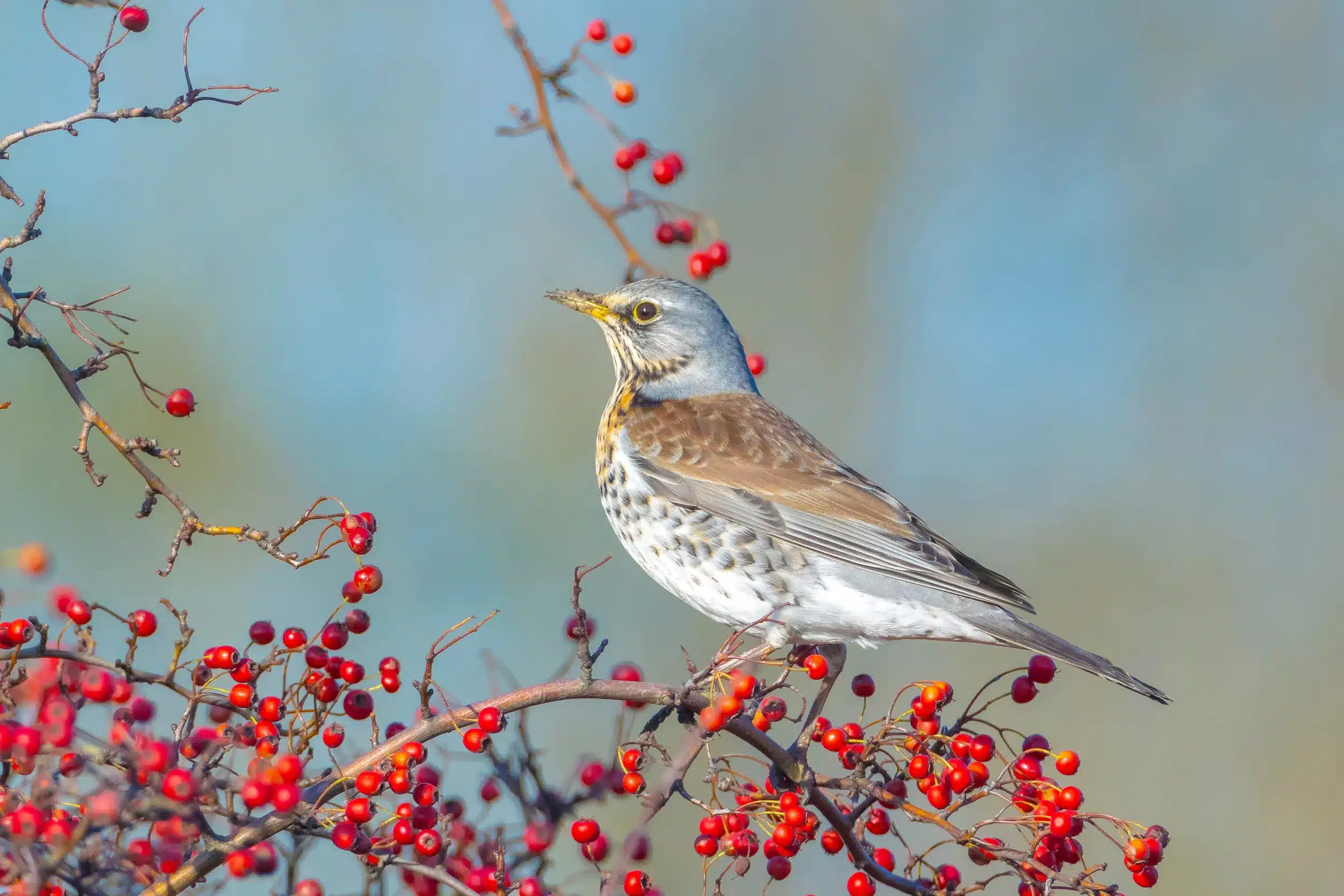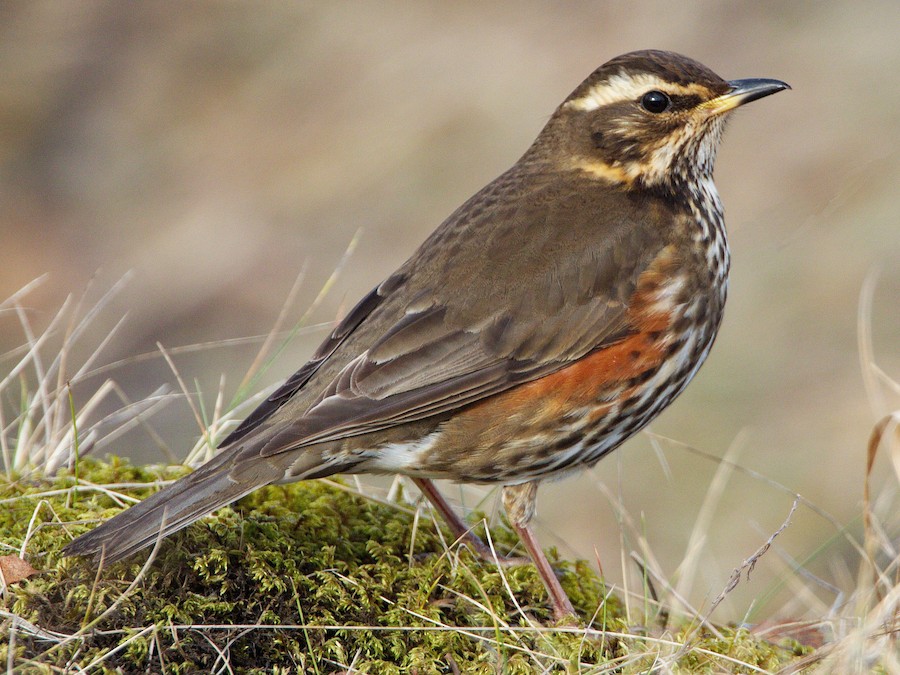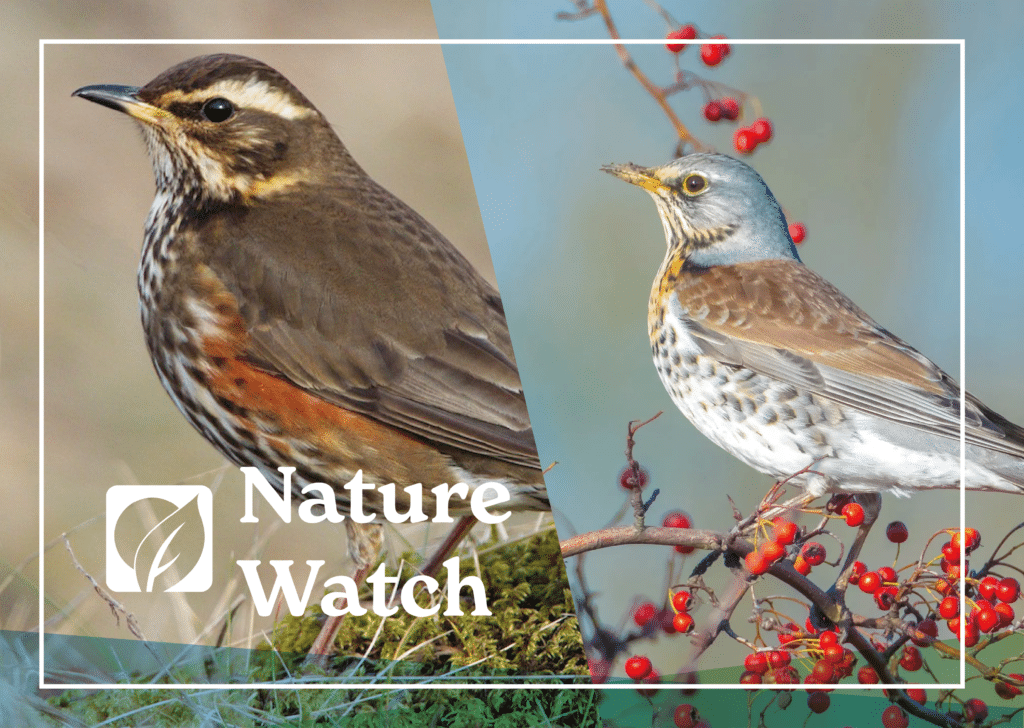Thanet Earth Nature Watch

Fieldfare
Scientific name: Turdus Polaris
Bird family: Thrushes
UK conservation status: Red
Protected by: The Wildlife and Countryside Act 1981
Length: 25cm (slightly larger than a Blackbird)
Wingspan: 39-42cm
Weight: 80-130g
Eats: Hedgerow fruits, invertebrates, sometimes wind fallen apples
Fieldfares have a distinct grey head and tail, with brown across the wings and back and orange colouration around the throat and chest. The flanks are pale and spotted in the same way as the chest. Their underwing is white if you see it during flight. They eat mainly hedgerow fruits such as hawthorn berries, but also invertebrates when the weather allows and sometimes wind fallen apples in gardens and orchards.
Small flocks of fieldfares may feed and travel together, usually across farmland and along hedgerows. They arrive in the autumn, however only a sporadic breeder in the UK. They will move into gardens as the winter progresses, particularly if there’s snow or other severe weather, looking for food from berry trees. They’re quite a large, aggressive species, and can spend a lot of their time driving other birds away from food. Most similar to mistle thrushes.

Redwing
Scientific name: Turdus lliacus
Bird family: Thrushes
UK conservation status: Amber
Protected by: The Wildlife and Countryside Act 1981
Length: 21cm (slightly smaller than the Fieldfare)
Wingspan: 35cm
Weight: 50-75g
Eats: Hawthorn and Rowan berries
As the name suggests, this bird has distinctive red patches on the underside of each brown back wing, a brown head with a pale stripe above the eye and a pale mottled front. Redwings are often seen travelling with groups of fieldfares, usually along hedgerows and across open fields. These birds migrate from Scandinavia and Iceland. In the autumn, they’re more of a rural bird, and groups can be seen feeding on hawthorn and rowan berries in hedgerows and on the edge of woodland. As the winter progresses, and particularly in harsh weather, they will move into towns and cities, and can be spotted with other thrushes in gardens. They are easy to confuse with song thrushes.
